#44 label group
Text

44 LABEL GROUP
35 notes
·
View notes
Text

44 LABEL GROUP SYMBIONT 2
7 notes
·
View notes
Text

Mona Tougaard // 44 Label Group Fall / Winter 2023
16 notes
·
View notes
Text

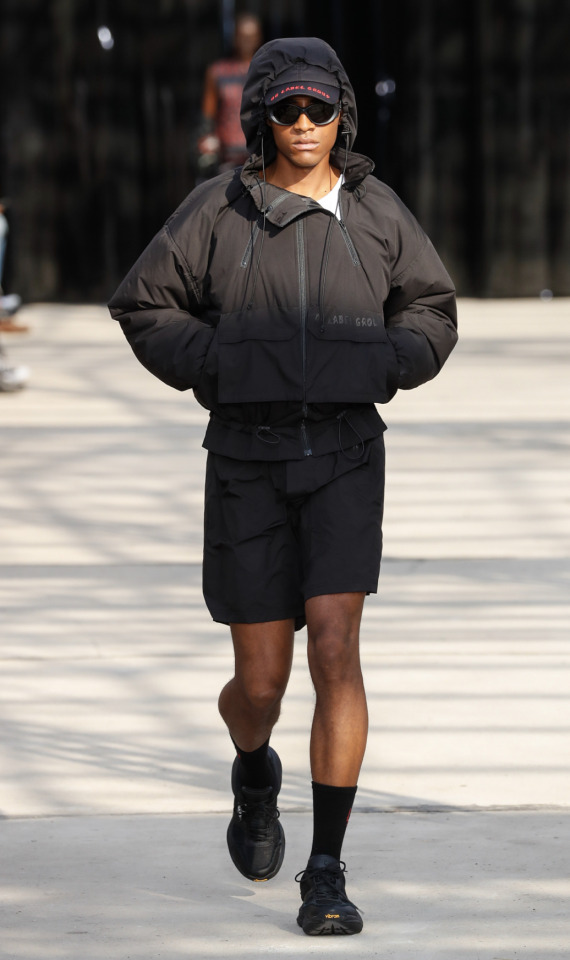
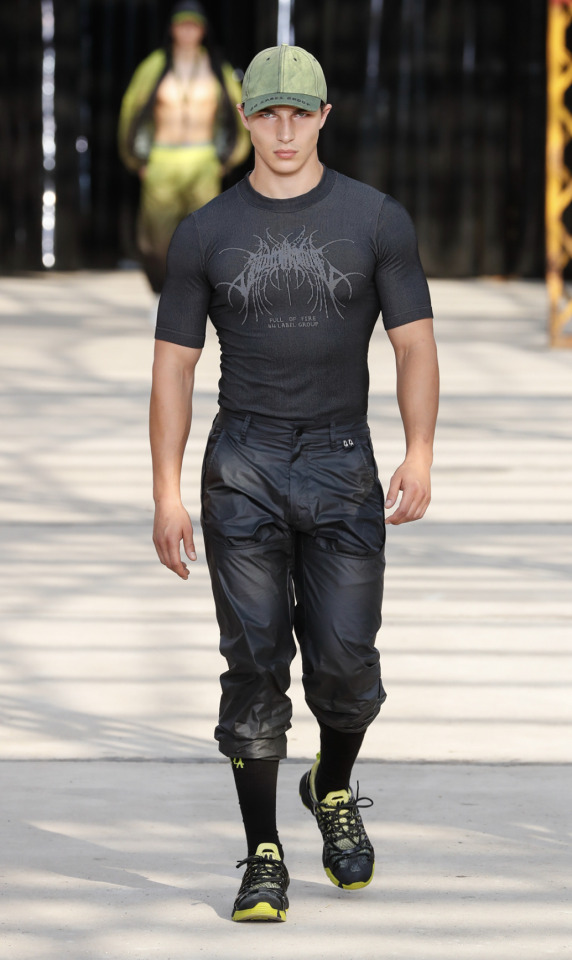

44 Label Group spring 2023
28 notes
·
View notes
Text

Badji Mamadou
for 44 Label Group | FW 23
shot by Vitali Gelwich
#badji mamadou#model#fashion photography#fashion photographer#vitali gelwich#44 label group#fw2023#fw23#fashion#style#beauty#fashion edit#editorial
4 notes
·
View notes
Photo
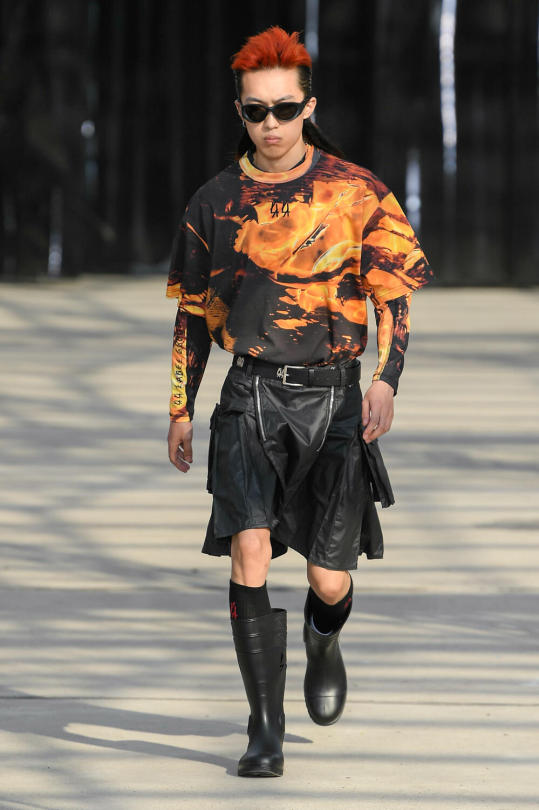
(vía Urbanista y arquitectónica: la colección Spring-Summer 2023 de 44 Label Group - Male Fashion Trends)
4 notes
·
View notes
Text
youtube
Rikhter (Live) | Boiler Room x Hardline: Pune
#RIKHTER#44 label group#what a set#this dude is such a menace#boiler room#techno#rave culture#Youtube
0 notes
Photo

Berghain's Notorious Bouncer Makes His Modeling Debut in Berlin Clubwear
Sven Marquardt, the legendary bouncer of Berlin nightclub Berghain notorious for admitting or denying people entry at his whim, is now a fashion model thanks to 44 Label Group, who featured him in the lookbook for its Fall 2023 collection.The brand was founded by techno producer Max Kobosil who started out DJ'ing at Berghain when he was just 22 before launching 44 Label Group as a brand that marries rave gear with luxury ready-to-wear. Enlisting Marquardt, then, was a no-brainer.In the lookbook, the nightlife icon-turned-photographer wears an all-black outfit with a "Rave New World" hoodie and slicked back hair showcasing his signature face tattoos. It's not her first foray into fashion — Marquardt was among the guests who scored an invite to Bottega Veneta's secret Berlin show during the pandemic.Titled "Blame Society," the Fall 2023 collection features bold prints, coarse fabrics and utilitarian uniforms built with 44 Label Group's clubwear-meets-functionality ethos. As a brand that emerged from Berlin's underground music scene, this season is fittingly about a "wardrobe of club kids from a doomed future."Slogans include "Vinyl Only," "Guest List" and "Backstage" and there's also a collab with DJ luggage brand UDG consisting of a strapped headphone case and waist bag. Other standouts include pleated combat skirts and full-body boiler suits. See more in the gallery, below.Photos courtesy of 44 Label Group/ Vitali Gelwich
https://www.papermag.com/sven-marquardt-44-label-group-2659304170.html
1 note
·
View note
Text
Code Green
A game for 3–7 players, about being where you're not supposed to be.
Last night, you were suspended in a tube of brightly coloured goo in an underground research facility, operated by an organisation whose three-letter initialism's meaning is strictly need-to-know.
This morning, someone noticed your tube was empty.
Nobody has determined how that happened yet, and you're not inclined to stick around until they figure it out!
Or, in other words, it's been nearly a whole week since I got that massive revision to Space Gerbils out the door, and apparently my brain has decided that's enough of a break. This thing was written start to finish in under 12 hours, so let the circumstances of its authorship guide your expectations. Special thanks go once again to Caro Asercion, whose micro-RPG Dwindle introduced me to the design space I'm fucking around with here. Go buy their stuff.
Anyway:
What You'll Need
Code Green is a tabletop RPG for one game moderator (GM) and up to six players. Each player will need a copy of the Profile Grid, below, as well as three tokens of some sort: dice, coins, beads, etc. You'll also need at least five six-sided dice (for the whole group, not per player, though it's fine if each player has their own set). If you're using dice for tokens, it's recommended that the dice you plan to roll be visually distinguishable in case they land on someone's Profile Grid.
Rolling Dice
There are two ways you'll be asked to roll dice in this game: rolling d66, and rolling a dice pool.
To roll d66, roll a six-side die twice, reading the first roll as the "tens" place and the second roll as the "ones" place, yielding a number in the range from 11 to 66. For example, if you rolled a 3 and then a 5, your result is 35. You may also be asked to flip a d66 roll; to do this, take your result and swap the digits without re-rolling. In the preceding example, if you flipped your roll of 35, your new result would be 53.
To roll a dice pool, pick up the indicated number of six-side dice, roll them, and take the highest individual result. Duplicates have no special significance. For example, if you rolled a pool of three dice and got a 2, a 4, and a 4, your result would be 4. If you would ever roll a pool of zero or fewer dice, roll two dice and take the lowest instead.
Character Creation
Each player should create their own character. There are three things about your character which are always true:
You are newly born into the world. You may know things about the world (e.g., from your programming, having read them on a computer terminal, etc.), but you haven't experienced them.
You are implausibly good at remaining inconspicuous; unless you're deliberately drawing attention or doing something which requires a dice roll, humans will almost always fail to spot you.
You are not human. You can decide what that means.
To find out what else is true about your character, roll or choose three times from the Form table, and three times from the Function table, placing your results into the correspondingly labelled slots on the Profile Grid, below, in any order you please. Your three results from each table should be different; if you elected to roll and get the same entry multiple times, flip your result, and re-roll if it's still a duplicate.
Think about what your three Form traits and three Function traits imply about your character's physical makeup, but don't set anything in stone just yet – you'll see why not in a moment.
Finally, roll a six-sided die five times, and record the results in the order in which they're received. The resulting five-digit number is the only name your character has when play begins.
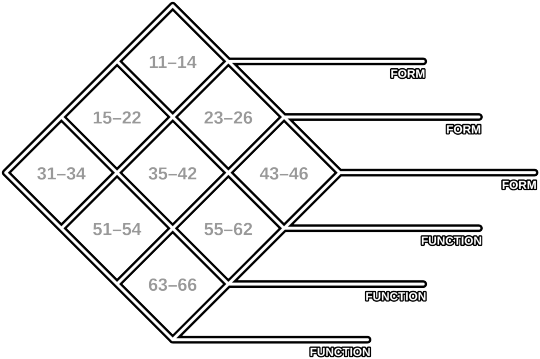
Table 1: Form (d66)
11–12. Blood
13–14. Bones
15–16. Brain
21–22. Claws
23–24. Ears
25–26. Eyes
31–32. Guts
33–34. Hands
35–36. Heart
41–42. Hair
43–44. Legs
45–46. Lungs
51–52. Nose
53–54. Skin
55–56. Tail
61–62. Teeth
63–64. Tongue
65–66. Wings
Table 2: Function (d66)
11–12. Accelerated
13–14. Autonomous
15–16. Auxiliary
21–22. Cryogenic
23–24. Cryptic
25–26. Elastic
31–32. Electric
33–34. Entropic
35–36. Invasive
41–42. Invulnerable
43–44. Kinetic
45–46. Magnetic
51–52. Phasing
53–54. Polymorphic
55–56. Projectile
61–62. Pyrogenic
63–64. Telescopic
65–66. Toxic
Playing the Game
Play proceeds in a series of scenes. In each scene, the GM will set the stage: a challenge to overcome, a peril to escape, a mystery to investigate, etc. Given the nature of your characters, most things will be mysteries to you!
Initial Token Placement
Once the stage has been set, place each of your three tokens on a different square on your Profile Grid. If you have no preference, you can roll d66 for each token and place it in the square whose marked numeric range contains the number you rolled, flipping or re-rolling your result if you get a square which already contains a token. The placement of these tokens represents your initial state when the scene opens. Depending on the nature of your character, this may be reflected by a shifting of internal focus, or by a physical transformation.
Participation
To participate in the scene, simply tell the GM what your character does; the GM will describe how the world responds, and ask what you do next. Whenever you wish – or are forced – to do something more than lurk and observe, you are obliged to make a test.
Making Tests
To make a test, first choose a pair of traits – one Form trait, and one Function trait – with which to face the challenge. For example, if your Form traits are Legs, Tail and Teeth, and your Function traits are Cryptic, Invulnerable and Phasing, you might test your Invulnerable Legs against the trouble at hand.
Next, count the number of tokens present in the rows extending from each of the chosen traits. The illustration below shows which squares would be consulted in the preceding example:
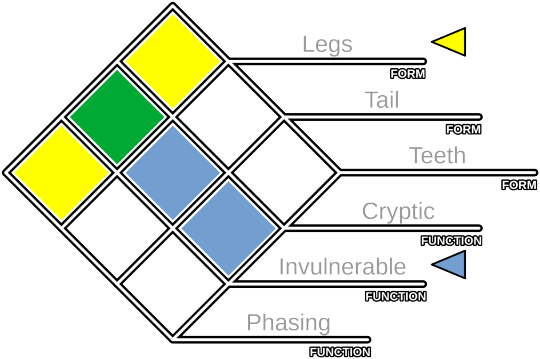
Next, roll a dice pool containing a number of dice equal to the number of tokens present on squares extending from the chosen traits. Do not count a token twice if it's on the square where the two traits intersect (e.g., the green square in the illustration above). In the event that no tokens fall on squares extending from appropriate traits, remember that you are allowed to roll a pool of zero dice by rolling two dice and taking the lowest rather than the highest.
Finally, compare your result to the following table:
1–3. Less than human. Whatever you'd intended to try still happens, but it cannot overcome human opposition (or adversity which would challenge a typical human), and any lasting effects are transitory and easily explained away.
4–5. Mostly human. Your effort can contend with human opposition (or circumstances which would challenge a competent human), and its lasting effects make it obvious that someone (or something) has been interfering with matters.
6. More than human. Your effort easily brushes aside any human opposition, and its lasting effects are impossible to rationalise as anything other than the intervention of inhuman forces.
Without Applicable Traits
In the event that you're forced to make a test and no possible pairing of your traits is applicable, you don't get to roll anything, not even with a pool of zero dice; simply resolve the outcome as though you'd rolled a result of 1–3. Other characters may attempt to preserve you from this fate by assisting you, in which case you roll one die per assisting friend; see below for more details.
Assistance
If you wish to assist another character in making a test, consult your own Profile Grid, considering only those squares which contain tokens. Only the specific pairs of traits represented by the squares on which your tokens fall are eligible for assistance; for example, if one of your tokens falls on the intersection of Cryptic and Teeth, you may assist with Cryptic Teeth, but not any other pair of traits involving Cryptic or Teeth unless those squares also have tokens on them.
If you're able to identify an eligible pair of traits that seems applicable to the test at hand, explain how you're using it to help, and hand the player making the test one extra die. Any number of characters may assist on a given test.
Providing assistance neither requires nor permits your character to adapt (see below) – it needs to be your own test for that!
Adapting
After resolving a test, your character adapts, shifting focus or form to reflect what they've learned. Take one token of your choice from your character sheet, and move it to a different square which doesn't already contain one. You can move any token you wish, but it must end up on a different square than the one it started on unless no valid destinations are available. Adapting is not optional, and must be carried out after every test.
Suffering Strain
If whatever you're making a test against is particularly strenuous or dangerous, you might suffer strain as a consequence. Strain will often be incurred on a result of 1–3, and rarely on a result of 4–5; only the most foolhardy efforts will incur strain even on a result of 6!
To incur strain, roll d66, and place a small X on the square on your Profile Grid whose indicated numeric range contains the number you rolled. If there's a token on that square, immediately move it to an empty square of your choice, unless fewer than three unmarked squares now remain; in that case, simply remove the token entirely.
For the remainder of the scene, tokens may not be moved to any marked square. In addition, if you suffer further strain, and the square indicated by your d66 roll is already marked, your character is incapacitated, and may not participate in tests at all until they recover.
All strain is cleared – and any discarded tokens restored – at the end of each scene. Incapacitated characters also recover at this time.
577 notes
·
View notes
Text

G.3 Is “anarcho”-capitalism a new form of individualist anarchism?
No. As Carole Pateman once pointed out, ”[t]here has always been a strong radical individualist tradition in the USA. Its adherents have been divided between those who drew anarchist, egalitarian conclusions, and those who reduced political life to the capitalist economy writ large, to a series of exchanges between unequally situated individuals.” [The Problem of Political Obligation, p. 205] What right-“libertarians” and “anarcho”-capitalists do is to confuse these two traditions, ignoring fundamental aspects of individualist anarchism in order to do so. Thus anarchist Peter Sabatini:
“in those rare moments when [Murray] Rothbard (or any other [right-wing] Libertarian) does draw upon individualist anarchism, he is always highly selective about what he pulls out. Most of the doctrine’s core principles, being decidedly anti-Libertarianism, are conveniently ignored, and so what remains is shrill anti-statism conjoined to a vacuous freedom in hackneyed defence of capitalism. In sum, the ‘anarchy’ of Libertarianism reduces to a liberal fraud.” [Libertarianism: Bogus Anarchy]
As class struggle anarchist Benjamin Franks notes individualist anarchism “has similarities with, but is not identical to, anarcho-capitalism.” [Rebel Alliances, p. 44] For Colin Ward, while the “mainstream” of anarchist propaganda “has been anarchist-communism” there are “several traditions of individualist anarchism”, including that associated with Max Stirner and “a remarkable series of 19th-century American figures” who “differed from free-market liberals in their absolute mistrust of American capitalism, and in their emphasis on mutualism.” Ward was careful to note that by the “late 20th century the word ‘libertarian’ . .. was appropriated by a new group of American thinkers” and so “it is necessary to examine the modern individualist ‘libertarian’ response from the standpoint of the anarchist tradition.” It was found to be wanting, for while Rothbard was “the most aware of the actual anarchist tradition among the anarcho-capitalist apologists” he may have been “aware of a tradition, but he is singularly unaware of the old proverb that freedom for the pike means death for the minnow.” The individualist anarchists were “busy social inventors exploring the potential of autonomy.” The “American ‘libertarians’ of the 20th century are academics rather than social activists, and their inventiveness seems to be limited to providing an ideology for untrammelled market capitalism.” [Anarchism: A Short Introduction, pp. 2–3, p. 62, p. 67, and p. 69]
In this section we will sketch these differences between the genuine libertarian ideas of Individualist Anarchism and the bogus “anarchism” of right-“libertarian” ideology. This discussion builds upon our general critique of “anarcho”-capitalism we presented in section F. However, here we will concentrate on presenting individualist anarchist analysis of “anarcho”-capitalist positions rather than, as before, mostly social anarchist ones (although, of course, there are significant overlaps and similarities). In this way, we can show the fundamental differences between the two theories for while there are often great differences between specific individualist anarchist thinkers all share a vision of a free society distinctly at odds with the capitalism of their time as well as the “pure” system of economic textbooks and right-“libertarian” dreams (which, ironically, so often reflects the 19th century capitalism the individualist anarchists were fighting).
First it should be noted that some “anarcho”-capitalists shy away from the term, preferring such expressions as “market anarchist” or “individualist anarchist.” This suggests that there is some link between their ideology and that of Tucker and his comrades. However, the founder of “anarcho”-capitalism, Murray Rothbard, refused that label for, while “strongly tempted,” he could not do so because “Spooner and Tucker have in a sense pre-empted that name for their doctrine and that from that doctrine I have certain differences.” Somewhat incredibly Rothbard argued that on the whole politically “these differences are minor,” economically “the differences are substantial, and this means that my view of the consequences of putting our more of less common system into practice is very far from theirs.” [“The Spooner-Tucker Doctrine: An Economist’s View”, pp. 5–15, Journal of Libertarian Studies, vol. 20, no. 1, p. 7]
What an understatement! Individualist anarchists advocated an economic system in which there would have been very little inequality of wealth and so of power (and the accumulation of capital would have been minimal without profit, interest and rent). Removing this social and economic basis would result in substantially different political regimes. In other words, politics is not isolated from economics. As anarchist David Wieck put it, Rothbard “writes of society as though some part of it (government) can be extracted and replaced by another arrangement while other things go on before, and he constructs a system of police and judicial power without any consideration of the influence of historical and economic context.” [Anarchist Justice, p. 227]
Unsurprisingly, the political differences he highlights are significant, namely “the role of law and the jury system” and “the land question.” The former difference relates to the fact that the individualist anarchists “allow[ed] each individual free-market court, and more specifically, each free-market jury, totally free rein over judicial decision.” This horrified Rothbard. The reason is obvious, as it allows real people to judge the law as well as the facts, modifying the former as society changes and evolves. For Rothbard, the idea that ordinary people should have a say in the law is dismissed. Rather, “it would not be a very difficult task for Libertarian lawyers and jurists to arrive at a rational and objective code of libertarian legal principles and procedures.” [Op. Cit., pp. 7–8] Of course, the fact that “lawyers” and “jurists” may have a radically different idea of what is just than those subject to their laws is not raised by Rothbard, never mind answered. While Rothbard notes that juries may defend the people against the state, the notion that they may defend the people against the authority and power of the rich is not even raised. That is why the rich have tended to oppose juries as well as popular assemblies. Unsurprisingly, as we indicated in section F.6.1, Rothbard wanted laws to be made by judges, lawyers, jurists and other “libertarian” experts rather than jury judged and driven. In other words, to exclude the general population from any say in the law and how it changes. This hardly a “minor” difference! It is like a supporter of the state saying that it is a “minor” difference if you favour a dictatorship rather than a democratically elected government. As Tucker argued, “it is precisely in the tempering of the rigidity of enforcement that one of the chief excellences of Anarchism consists .. . under Anarchism all rules and laws will be little more than suggestions for the guidance of juries, and that all disputes … will be submitted to juries which will judge not only the facts but the law, the justice of the law, its applicability to the given circumstances, and the penalty or damage to be inflicted because of its infraction .. . under Anarchism the law … will be regarded as just in proportion to its flexibility, instead of now in proportion to its rigidity.” [The Individualist Anarchists, pp. 160–1] In others, the law will evolve to take into account changing social circumstances and, as a consequence, public opinion on specific events and rights. Tucker’s position is fundamentally democratic and evolutionary while Rothbard’s is autocratic and fossilised.
This is particularly the case if you are proposing an economic system which is based on inequalities of wealth, power and influence and the means of accumulating more. As we note in section G.3.3, one of individualist anarchists that remained pointed this out and opposed Rothbard’s arguments. As such, while Rothbard may have subscribed to a system of competing defence companies like Tucker, he expected them to operate in a substantially different legal system, enforcing different (capitalist) property rights and within a radically different socio-economic system. These differences are hardly “minor”. As such, to claim that “anarcho”-capitalism is simply individualist anarchism with “Austrian” economics shows an utter lack of understanding of what individualist anarchism stood and aimed for.
On the land question, Rothbard opposed the individualist position of “occupancy and use” as it “would automatically abolish all rent payments for land.” Which was precisely why the individualist anarchists advocated it! In a predominantly rural economy, as was the case during most of the 19th century in America, this would result in a significant levelling of income and social power as well as bolstering the bargaining position of non-land workers by reducing the numbers forced onto the labour market (which, as we note in section F.8.5, was the rationale for the state enforcing the land monopoly in the first place). He bemoans that landlords cannot charge rent on their “justly-acquired private property” without noticing that is begging the question as anarchists deny that this is “justly-acquired” land in the first place. Unsurprising, Rothbard considered “the proper theory of justice in landed property can be found in John Locke”, ignoring the awkward fact that the first self-proclaimed anarchist book was written precisely to refute that kind of theory and expose its anti-libertarian implications. His argument simply shows how far from anarchism his ideology is. For Rothbard, it goes without saying that the landlord’s “freedom of contract” tops the worker’s freedom to control their own work and live and, of course, their right to life. [Op. Cit., p. 8 and p. 9]
For anarchists, “the land is indispensable to our existence, consequently a common thing, consequently insusceptible of appropriation.” [Proudhon, What is Property?, p. 107] Tucker looked forward to a time when capitalist property rights in land were ended and “the Anarchistic view that occupancy and use should condition and limit landholding becomes the prevailing view.” This “does not simply mean the freeing of unoccupied land. It means the freeing of all land not occupied by the owner” and “tenants would not be forced to pay you rent, nor would you be allowed to seize their property. The Anarchic associations would look upon your tenants very much as they would look upon your guests.” [The Individualist Anarchists, p. 159, p. 155 and p. 162] The ramifications of this position on land use are significant. At its most basic, what counts as force and coercion, and so state intervention, are fundamentally different due to the differing conceptions of property held by Tucker and Rothbard. If we apply, for example, the individualist anarchist position on land to the workplace, we would treat the workers in a factory as the rightful owners, on the basis of occupation and use; at the same time, we could treat the share owners and capitalists as aggressors for attempting to force their representatives as managers on those actually occupying and using the premises. The same applies to the landlord against the tenant farmer. Equally, the outcome of such differing property systems will be radically different — in terms of inequalities of wealth and so power (with having others working for them, it is unlikely that would-be capitalists or landlords would get rich). Rather than a “minor” difference, the question of land use fundamentally changes the nature of the society built upon it and whether it counts as genuinely libertarian or not.
Tucke was well aware of the implications of such differences. Supporting a scheme like Rothbard’s meant “departing from Anarchistic ground,” it was “Archism” and, as he stressed in reply to one supporter of such property rights, it opened the door to other authoritarian positions: “Archism in one point is taking him to Archism is another. Soon, if he is logical, he will be an Archist in all respects.” It was a “fundamentally foolish” position, because it “starts with a basic proposition that must be looked upon by all consistent Anarchists as obvious nonsense.” “What follows from this?” asked Tucker. “Evidently that a man may go to a piece of vacant land and fence it off; that he may then go to a second piece and fence that off; then to a third, and fence that off; then to a fourth, a fifth, a hundredth, a thousandth, fencing them all off; that, unable to fence off himself as many as he wishes, he may hire other men to do the fencing for him; and that then he may stand back and bar all other men from using these lands, or admit them as tenants at such rental as he may choose to extract.” It was “a theory of landed property which all Anarchists agree in viewing as a denial of equal liberty.” It is “utterly inconsistent with the Anarchistic doctrine of occupancy and use as the limit of property in land.” [Liberty, No. 180, p. 4 and p. 6] This was because of the dangers to liberty capitalist property rights in land implied:
“I put the right of occupancy and use above the right of contract … principally by my interest in the right of contract. Without such a preference the theory of occupancy and use is utterly untenable; without it … it would be possible for an individual to acquire, and hold simultaneously, virtual titles to innumerable parcels of land, by the merest show of labour performed thereon … [This would lead to] the virtual ownership of the entire world by a small fraction of its inhabitants … [which would see] the right of contract, if not destroyed absolutely, would surely be impaired in an intolerable degree.” [Op. Cit., no. 350, p. 4]
Clearly a position which Rothbard had no sympathy for, unlike landlords. Strange, though, that Rothbard did not consider the obvious liberty destroying effects of the monopolisation of land and natural resources as “rational grounds” for opposing landlords but, then, as we noted in section F.1 when it came to private property Rothbard simply could not see its state-like qualities — even when he pointed them out himself! For Rothbard, the individualist anarchist position involved a “hobbling of land sites or of optimum use of land ownership and cultivation and such arbitrary misallocation of land injures all of society.” [Rothbard, Op. Cit., p. 9] Obviously, those subject to the arbitrary authority of landlords and pay them rent are not part of “society” and it is a strange coincidence that the interests of landlords just happen to coincide so completely with that of “all of society” (including their tenants?). And it would be churlish to remind Rothbard’s readers that, as a methodological individualist, he was meant to think that there is no such thing as “society” — just individuals. And in terms of these individuals, he clearly favoured the landlords over their tenants and justifies this by appealing, like any crude collectivist, to an abstraction (“society”) to which the tenants must sacrifice themselves and their liberty. Tucker would not have been impressed.
For Rothbard, the nineteenth century saw “the establishment in North America of a truly libertarian land system.” [The Ethics of Liberty, p. 73] In contrast, the Individualist Anarchists attacked that land system as the “land monopoly” and looked forward to a time when “the libertarian principle to the tenure of land” was actually applied [Tucker, Liberty, no. 350, p. 5] So given the central place that “occupancy and use” lies in individualist anarchism, it was extremely patronising for Rothbard to assert that “it seems … a complete violation of the Spooner-Tucker ‘law of equal liberty’ to prevent the legitimate owner from selling his land to someone else.” [“The Spooner-Tucker Doctrine: An Economist’s View”, Op. Cit., p. 9] Particularly as Tucker had explicitly addressed this issue and indicated the logical and common sense basis for this so-called “violation” of their principles. Thus “occupancy and use” was “the libertarian principle to the tenure of land” because it stopped a class of all powerful landlords developing, ensuring a real equality of opportunity and liberty rather than the formal “liberty” associated with capitalism which, in practice, means selling your liberty to the rich.
Somewhat ironically, Rothbard bemoaned that it “seems to be a highly unfortunate trait of libertarian and quasi-libertarian groups to spend the bulk of their time and energy emphasising their most fallacious or unlibertarian points.” [Op. Cit., p. 14] He pointed to the followers of Henry George and their opposition to the current land holding system and the monetary views of the individualist anarchists as examples (see section G.3.6 for a critique of Rothbard’s position on mutual banking). Of course, both groups would reply that Rothbard’s positions were, in fact, both fallacious and unlibertarian in nature. As, indeed, did Tucker decades before Rothbard proclaimed his private statism a form of “anarchism.” Yarros’ critique of those who praised capitalism but ignored the state imposed restrictions that limited choice within it seems as applicable to Rothbard as it did Herbert Spencer:
“A system is voluntary when it is voluntary all round … not when certain transactions, regarded from certain points of view, appear Voluntary. Are the circumstances which compel the labourer to accept unfair terms law-created, artificial, and subversive of equal liberty? That is the question, and an affirmative answer to it is tantamount to an admission that the present system is not voluntary in the true sense.” [Liberty, no. 184, p. 2]
So while “anarcho”-capitalists like Walter Block speculate on how starving families renting their children to wealthy paedophiles is acceptable “on libertarian grounds” it is doubtful that any individualist anarchist would be so blasé about such an evil. [“Libertarianism vs. Objectivism: A Response to Peter Schwartz,” pp. 39–62, Reason Papers, Vol. 26, Summer 2003, p. 20] Tucker, for example, was well aware that liberty without equality was little more than a bad joke. “If,” he argued, “after the achievement of all industrial freedoms, economic rent should prove to be the cause of such inequalities in comfort that an effective majority found themselves at the point of starvation, they would undoubtedly cry, ‘Liberty be damned!’ and proceed to even up; and I think that at that stage of the game they would be great fools if they didn’t. From this it will be seen that I am no[t] … a stickler for absolute equal liberty under all circumstances.” Needless to say, he considered this outcome as unlikely and was keen to ”[t]ry freedom first.” [Liberty, no. 267, p. 2 and p. 3]
The real question is why Rothbard considered this a political difference rather than an economic one. Unfortunately, he did not explain. Perhaps because of the underlying socialist perspective behind the anarchist position? Or perhaps the fact that feudalism and monarchism was based on the owner of the land being its ruler suggests a political aspect to propertarian ideology best left unexplored? Given that the idea of grounding rulership on land ownership receded during the Middle Ages, it may be unwise to note that under “anarcho”-capitalism the landlord and capitalist would, likewise, be sovereign over the land and those who used it? As we noted in section F.1, this is the conclusion that Rothbard does draw. As such, there is a political aspect to this difference, namely the difference between a libertarian social system and one rooted in authority.
Ultimately, “the expropriation of the mass of the people from the soil forms the basis of the capitalist mode of production.” [Marx, Capital, vol. 1, p. 934] For there are “two ways of oppressing men: either directly by brute force, by physical violence; or indirectly by denying them the means of life and this reducing them to a state of surrender.” In the second case, government is “an organised instrument to ensure that dominion and privilege will be in the hands of those who … have cornered all the means of life, first and foremost the land, which they make use of to keep the people in bondage and to make them work for their benefit.” [Malatesta, Anarchy, p. 21] Privatising the coercive functions of said government hardly makes much difference.
As such, Rothbard was right to distance himself from the term individualist anarchism. It is a shame he did not do the same with anarchism as well!
#faq#anarchy faq#revolution#anarchism#daily posts#communism#anti capitalist#anti capitalism#late stage capitalism#organization#grassroots#grass roots#anarchists#libraries#leftism#social issues#economy#economics#climate change#climate crisis#climate#ecology#anarchy works#environmentalism#environment#solarpunk#anti colonialism#mutual aid#cops#police
28 notes
·
View notes
Text
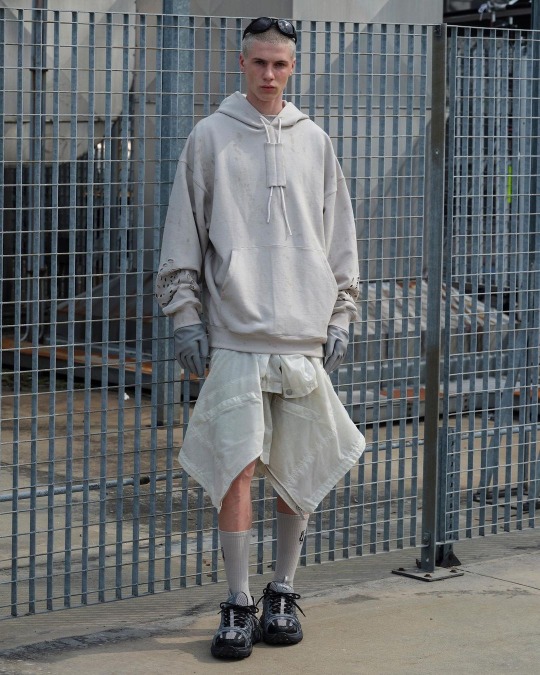

44 LABEL GROUP
22 notes
·
View notes
Text
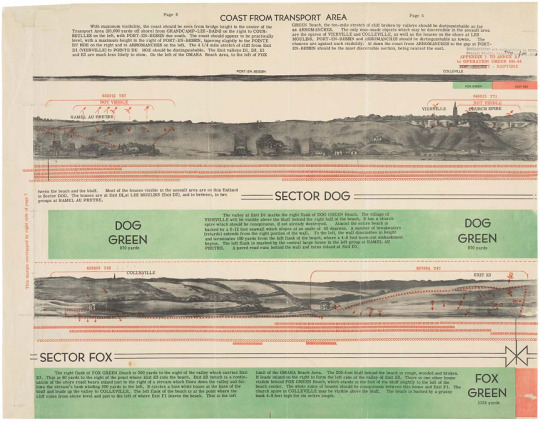
Panoramic Sketch of the D-Day Beaches
Record Group 331: Records of Allied Operational and Occupation Headquarters, World War IISeries: Geographic Intelligence Maps
large, centered on top]: COAST FROM TRANSPORT AREA [top left, column]: Page 6 [continue column, top left]: "With maximum visibility, the coast should be seen from bridge height in the center of the Transport Area (20,000 yards off shore) from GRANDCAMP-LES-BAINS on the right to COURSEULLES on the left, with PORT-EN-BESSIN due south. The coast should appear to be practically level, with a maximum height to the right of PORT-EN-BESSIN, tapering slightly to the POINTE DU HOE on the right and to ARROMANCHES on the left. The 4 1/4 mile stretch of cliff from Exit D1 (VIERVILLE) to POINTE DU HOE should be distinguishable. The Exit valleys D1, D3, E1 and E3 are much less likely to show. On the left of the OMAHA Beach Area, to the left of FOX" [misspelling? should be POINTE DU HOC and not 'POINTE DU HOE'?] [top of column on top right, Page 5] [column, top right, continuation of left column]: "GREEN Beach, the ten-mile stretch of cliff broken by valleys should be distinguishable as far as ARROMANCHES. The only man-made objects which may be discernible in the assault area are the spires of VIERVILLE and COLLEVILLE, as well as the houses on the shore at LES MOULINS, PORT-EN-BESSIN and ARROMANCHES should be distinguishable as towns. The chances are against such visibility. At dawn the coast form ARROMANCHES to the gap at PORT-EN-BESSIN should be the most discernible section, being nearest the east." [two stamps bottom right of top right column: first stamp "DECLASSIFIED per authorities in [illegible other than "C"]. Project 84-(either "515" or "010"). Date [handwritten on line, illegible] by [handwritten initials on line, "JAD"?, followed by another illegible word]; second stamp, in red, just below the first: "APPENDIX 1 TO ANNEX A to OPERATION ORDER BB-44 (crossed out by hand, "TOP-SECRET") - NEPTUNE] [the coastline as described above is depicted horizontally across the page, with two places labeled above their location, "PORT-EN-BESSIN" and "COLLEVILLE"; underneath the coastline depiction "FOX GREEN" and "EASY RED" are labeled and highlighted in their respective colors of green and red] [full transcription at link]
34 notes
·
View notes
Text

Mona Tougaard // 44 Label Group Fall / Winter 2023
5 notes
·
View notes
Text


𐚁 BASICS
BIRTH NAME :: BAE MINJI (배민지)
STAGE NAME :: ALICE (앨리스)
ENGLISH NAME :: ALICE BAE
BIRTHDAY :: NOVEMBER 7, 2000
ZODIAC SIGN :: SCORPIO / DRAGON
ETHNICITY :: KOREAN
NATIONALITY :: KOREAN
BIRTHPLACE :: ANDONG, SOUTH KOREA
HOMETOWN :: SEOUL, SOUTH KOREA
SEXUALITY :: HETEROSEXUAL
RELATIONSHIP STATUS :: TAKEN
LANGUAGES :: KOREAN, CHINESE, JAPANESE, ENGLISH, THAI
𐚁 PHYSICAL
FACECLAIM :: PARK 'GO WON' CHAEWON
GENDER :: CIS FEMALE
HEIGHT :: 163 CM (5’4″)
WEIGHT :: 44 KG (97 LBS)
BLOOD TYPE :: B
VOICECLAIM :: KIM SIHYEON (EVERGLOW)
DANCECLAIM :: CHAEYOUNG (FROMIS_9)
𐚁 CAREER
LABEL :: SM ENTERTAINMENT (2014-PRESENT)
GROUP :: AESPA (에스파)
SUB-UNIT :: N/A
POSITION :: LEAD VOCALIST & LEAD DANCER
𐚁 AESPA UNIVERSE
OFFICIAL ANIMAL :: FOX
OFFICIAL SYMBOL :: LOCK 🔒
OFFICIAL NUMBER :: 7
OFFICIAL ABILITY :: CODEBREAKER
OFFICIAL WEAPON :: DIGITAL INTERFACE GLOVES
AVATAR: AE-ALICE



𐚁 FACTS
SHE WAS ORIGINALLY CONSIDERED THE LEADER OF THE GROUP.
HER STAGE NAME "ALICE" WAS CHOSEN OUT OF SEVERAL DIFFERENT CANDIDATES. OTHERS INCLUDED 엔야/ENYA, SOPHIE, 보다/BODA (TO WATCH), & 한비/HANBI (ONE RAINDROP).
HER ROLE MODEL IS GIRLS' GENERATION MEMBER TAEYEON.
ALICE'S STAGE NAME MEANS "NOBLE" IN GERMAN.
ALICE WANTS TO INTRODUCE A NEW VILLAIN TO AESPA'S STORYLINE. SHE HAS 3 IDEAS BUT WANTS TO KEEP THEM TO HERSELF.
ALICE'S FAVORITE ERA IS BLACK MAMBA SINCE IT WAS THE FIRST SONG TO MEET MYs.
SHE IS INCREDIBLE CHARGE OF ELEGANCE IN THE GROUP.
SHE AND KARINA ARE KNOWN FOR THEIR SIMILAR FACES , NETIZENS CALL THEM MY-ALICERINA.
SHE PREFERS THEIR GIRL CRUSH CONCEPT THAN THEIR INNOCENT CONCEPT.
#(𐚁 : be my æ ⸻ profile )#fictional idol community#fictional idol addition#aespa addition#kpop addition#fictional idol oc#fictional kpop community#fake kpop addition#aespa 5th member#fifth member of aespa#aespa fifth member#fake kpop oc#fake aespa oc#fake kpop idol#fictional kpop idol
41 notes
·
View notes
Text
TF2 Mercs As Animals!
————————————————————
I think these silly guys would be ultra silly as animals. Can you tell I've thought of this for a couple days now?
————————————————————
TW: GORE AND BLOOD MENTION AT THE END
————————————————————
Demo- Komodo Dragon!

Demo is one of these drangons for 3 reasons. Both are very smart, very dangerous, and let's be honest if demo bit you you'd probably die from some type of infection. (Maybe not, I'm pretty sure he drank hydrogen peroxide in comic 6, and I wholeheartedly believe that can't be a one-time thing).
No, but seriously, I feel like he would be one for some reason.
————————————————————
Engie- Meerkat!

I think Engie would be a meerkat based mainly on the fact that they are insanely skilled builders. Meerkats are known to build super intricate underground homes. It also doesn't hurt that they are social creatures that tend to live in big groups, and are like crazy violent, even though they might not look the part.
————————————————————
Heavy- Rottweiler!

Maybe an obvious choice, but! Just because its obvious doesn't mean it isn't true. Rottweilers are super friendly and loyal to their families but can also be great attack dogs. Rottweilers are strong enough to kill humans, also these dogs are UNITS! They can weigh in at 130 lbs. (58 kg). So I definitely think Heavy would be a rottweiler, or probably any big dog in general.
————————————————————
Medic- Dove! (So original 😮💨)

Not that this idea hasn't been done to death, but hear me out! I genuinely think he'd be one. Doves are typically labeled as very clean animals with unique calls. They're also super intelligent and skilled, as we learned through carrier birds. And I think sums up Medic really well!
————————————————————
Scout- African Wild Dog!

Scout definitely matches up with African wild dogs, super fast, agile, and hyper aware, and will run you down at 44 mph (70 kph) and have insane stamina when chasing down prey. They are also amazing at their hunts with an 85% success rate, so I think he'd make a good wild dog :)
————————————————————
Sniper- Owl!

Sniper is 100% an owl, owls can see mice from at least six to seven feet away and have very few vertebrae in their necks, making it easy for them to look in all directions. Owls and other birds of prey would be your best bet to find a sniper in the animal kingdom!
————————————————————
Spy- Ferret!

Spy is a ferret, hands down. Ferrets can be sneaky and very devious. They love to be where they shouldn't and love to mess things up. Also, cute little fact, plus a mini headcanon! (I like to think Spy can dance really well, so similarly to him, ferrets can dance!
————————————————————
Pyro- Echidna!

I picked this wacky little guy for Pyro for two reasons. One, the long nose kind reminds me of Pyro's mask (could be reaching here who knows). And two, they're fireproof, well kind of. See, they can breathe through wildfires, so they don't risk smoke inhalation, which is why most people/animals die, so bonus points again for that nose being like they're mask?
ALSO, THEY ARE SO WEIRD, listen to this
"spines like a porcupine, a beak like a bird, a pouch like a kangaroo, and lays eggs like a reptile"
Insane.
————————————————————
Sometimes I feel really dumb for doing these, and then I remember if even one person likes them, then it's not dumb.
I had a hard time explaining my reasoning on these 😭 I normally just look at people and assign them colors or animals in my head with no explanation as to why it fits.
Also, do you know how hard it is to find a picture of a cute Komodo dragon? Like their cool as fuck but like Jesus, you look them up and most of the time it's bloody.
SAME WITH THE AFRICAN WILD DOG!?!? I looked up "African wild dog cute" and saw one holding a monkeys face, detached from body and skull.
Mercs as works of art / mercs favorite pieces of art up next!
#tf2#team fortress 2#team fortress headcanons#tf2 headcanons#tf2 hcs#tf2 demoman#tf2 engineer#tf2 heavy#tf2 medic#tf2 scout#tf2 sniper#tf2 spy#tf2 soldier#tf2 pyro
98 notes
·
View notes
Photo

(vía Urbanista y arquitectónica: la colección Spring-Summer 2023 de 44 Label Group - Male Fashion Trends)
2 notes
·
View notes